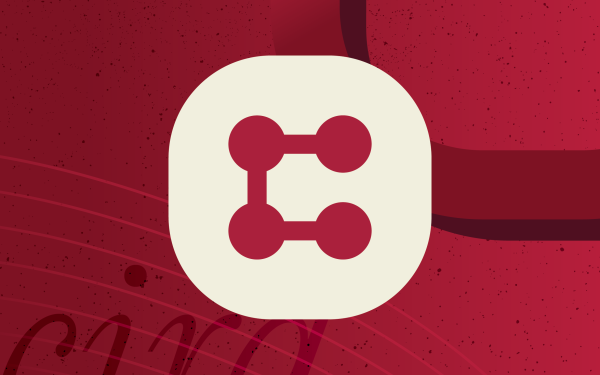What do you do when your internet goes out? You probably check your phone… But what if your mobile provider went down, and all of your neighbours lost their internet, too? Unfortunately, this is reality for a growing number of Canadians.
It’s no secret that the demand for housing in Canada is booming; to keep pace, large apartment and condominiums are popping up across Canada. As they do, developers and internet service providers (ISPs) are making exclusive deals that leave residents with no choice and only one provider. Relying on a single provider leaves these Canadians vulnerable to major service disruptions. Last year, over a quarter of Canadians experienced a major service disruption, some lasting days.
As Canadian networks grow in tandem with increasing housing supply, internet access resilience must be made a priority.
What is internet access resilience?
Internet access resilience is the ability for users and applications to have an acceptable level of internet service when an outage occurs. For example, resilient internet access keeps critical infrastructure and emergency services like internet-enabled 9-1-1 up and running even when other parts of the internet go down. Resilient systems recover from faults and maintain or restore acceptable levels of service quickly.
A common misconception is that redundancy and resilience are the same. Redundancy involves duplicating components of a network in case of failure. Having two separate connections from one provider is an example of redundancy; however, it is not resilient. If the ISP suffers an outage, both connections would still go down. If your phone and internet access are from the same provider, then in the case of an outage, your cellular service wouldn’t be able to support you.
A resilient internet avoids single points of failure. Redundancy can be a precursor of resilience when it creates enough diversity to prevent single points of failure. An example of this would include having more than one service provider at your various internet access points; in other words, ensuring your home internet and your mobile networks are connected to different providers. This choice is made difficult in the condos where only one provider is available.
While having more than one provider is a step to increasing internet access resilience, understanding the various parts of their network is key. Transit networks connect the end-user – whether at home, a small business or a community centre—to the global internet. Transport—or backhaul when discussing mobile networks—connects two points of the network, such as from an interconnection point with a retail ISP to another internet exchange point (IXP). Ensuring diversity between your transit providers is important for resilient access; but making sure that the transport networks your providers connect to are distinct will make all the difference.
Why does it matter for condo residents?
The internet is what connects Canadians to the critical services and information they need most. On a day-to-day basis, individuals’ tolerance for outages will differ. For some of us, having no connectivity for an afternoon may be a minor inconvenience. For others, it may disrupt critical monitoring devices, like fall detectors for the elderly, medical alarms and security cameras. In condo communities—many the size of small towns with thousands of residents—it’s too high a risk to not build in resilient options.
It’s no secret that crises are growing in frequency and often converging with one another. Internet access resilience is critical in face of extreme weather events and other disasters. Just this year, access to the internet and mobile communications were critical for evacuation and safety information during wildfires and floods across the country. It’s imperative that Canadians can access critical information and resources through the internet. The current state of internet access resilience for condo communities in Canada can quickly create disastrous emergency scenarios with no tools to communicate.
How can we make the internet more resilient?
All actors have a role to play in making the internet more resilient—whether you’re a home-user, a decision maker at an ISP, or working in government. The Canadian Forum for Digital Infrastructure Resilience’s Internet Resilience Working Group recently published Guidelines for Evaluating Internet Access Resilience in Canada.
Individuals, whether recreational home-users or remote workers, can empower themselves with more resilient internet access in a few ways. Having back-up power supplies is key in any emergency preparedness situation. But, affordability permitting, having secondary providers—in other words, one provider for home internet and another for your mobile device and data—will go a long way to improving your access resilience in the event of an ISP outage.
As good as it is that Canadians can empower themselves to improve resilience, the burden shouldn’t be shouldered by individuals alone. In many condo communities, the choice has been taken away for home users to have more than one provider, which is critical for internet access resilience. Often, in scenarios where more than one provider is available, its untenable for many Canadians to be able to afford a second provider.
As Canadian networks grow in tandem with the housing supply, internet access resilience must be made a priority. Decision-makers at ISPs and in the government must prioritize an environment with multiple network providers, mixed technologies and resilient configurations to ensure that Canadians can access the internet 24/7, 365 days—no matter where they live.
As an expert in developing innovative, leading-edge IT solutions, Jacques has established CIRA as a global leader among ccTLD registries. He has 25+ years of experience in the private and not-for-profit sectors and as CIRA’s CTO,is currently leading CIRA Labs, CIRA’s innovation hub and providing leadership and direction for the management and security of the .CA registry and its underlying DNS.
A visionary in the Internet community, Jacques led the development of CIRA’s Internet Performance Test, is an outspoken advocate for the adoption of IPv6 and represents the .CA registry internationally as a member of a variety of working groups and advisory groups. He is committed to the development of a new Canadian Internet architecture. He has served as the catalyst for the creation of a national Canadian IXP association, CA-IX, and is a member of the Manitoba Internet Exchange’s (MBIX) and the DNS-OARC Board of Directors. Jacques is also a member of ICANN’s Security and Stability Advisory Committee (SSAC).
Jacques holds an Electronics Engineering Technologist diploma from Algonquin College, is ITIL v3 Foundation certified and is a certified Agile ScrumMaster.






